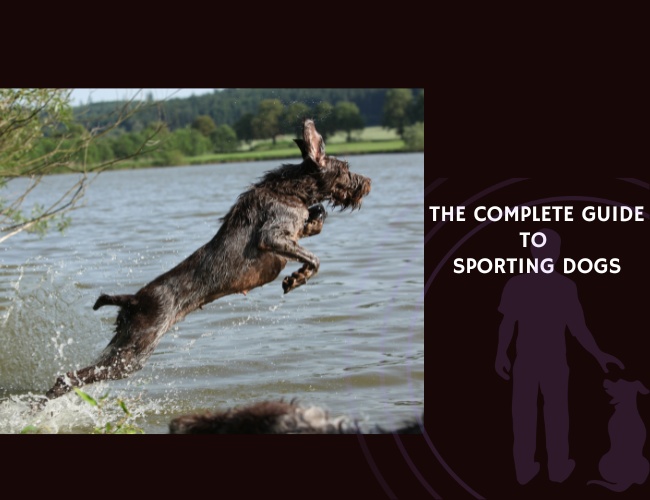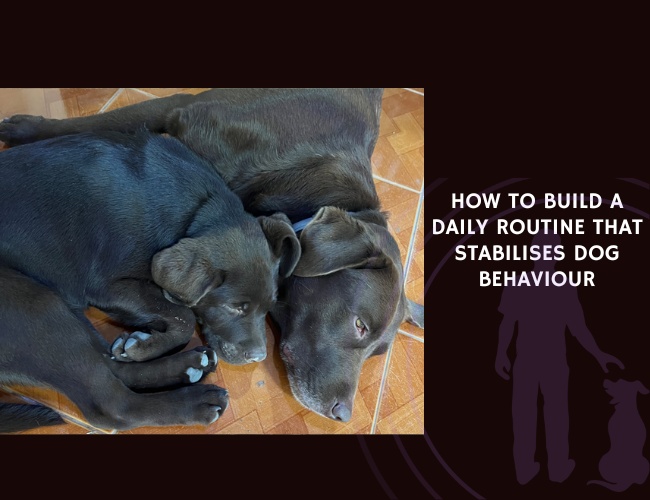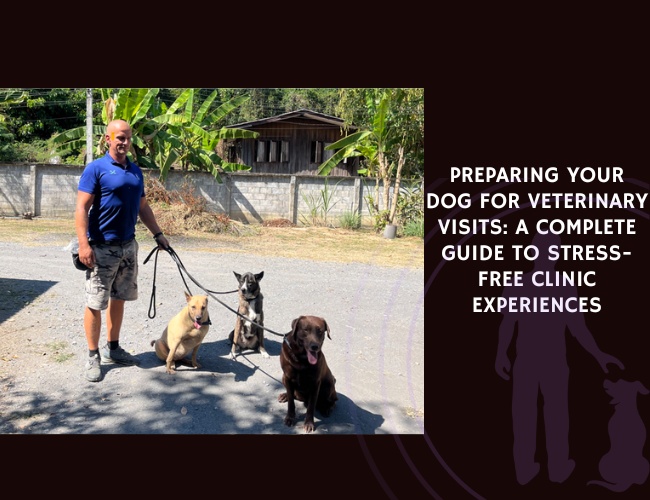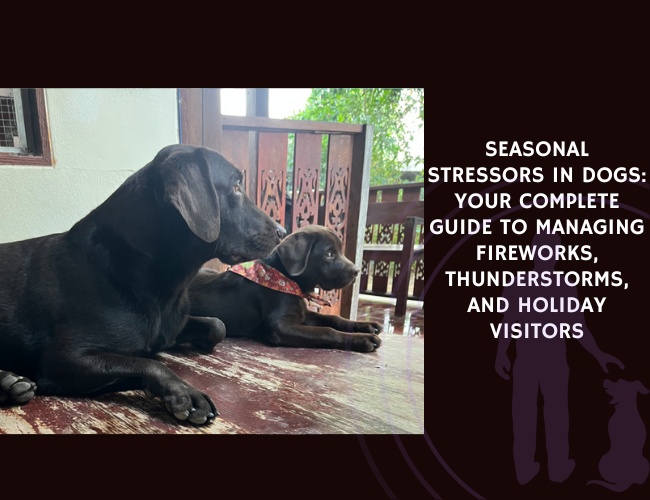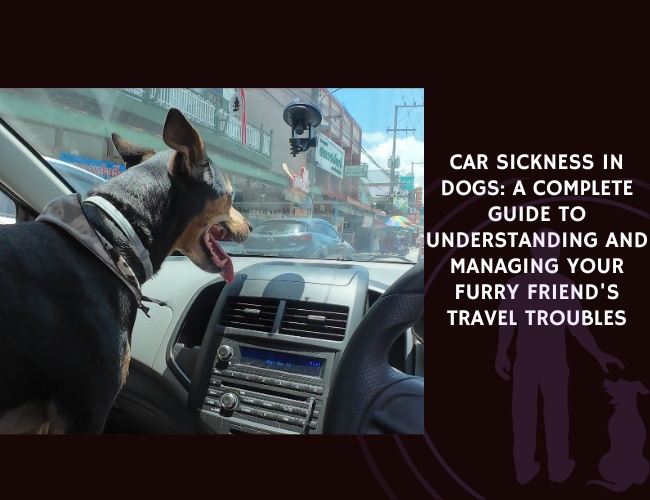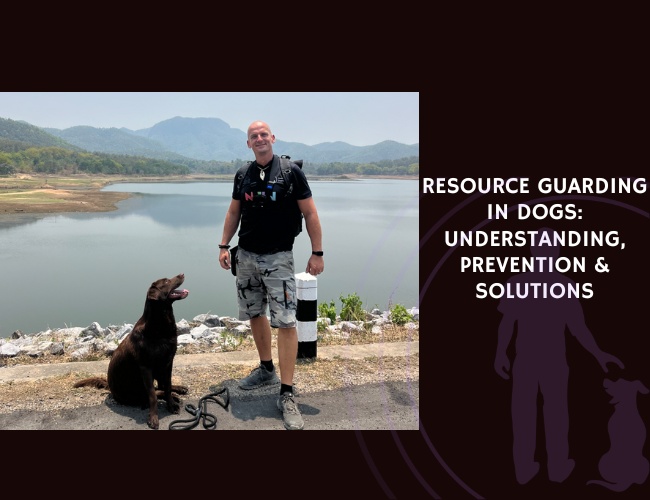Introduction: A Legacy of Partnership
Have you ever watched a Golden Retriever leap joyfully into a lake, or observed a Pointer frozen in perfect stance, tail rigid with anticipation? These moments capture the essence of sporting dogs—breeds that have evolved alongside humans for centuries, transforming from medieval hunting companions into today’s beloved family members and working partners. Let us guide you through the remarkable world of sporting dogs, where instinct meets training, and ancient drives shape modern relationships.
The story of sporting dogs isn’t just about hunting or retrieving. It’s about a unique partnership that has shaped both human and canine evolution. From the misty moors of Scotland where setters first crouched low to signal hidden birds, to the icy waters of the Chesapeake Bay where retrievers plunged after waterfowl, these dogs have been our partners in adventure and survival. Today, whether they’re detecting cancer cells in a laboratory or simply fetching tennis balls in your backyard, sporting dogs carry within them centuries of selective breeding that makes them some of the most trainable, gentle, and devoted companions you could ask for.
Did you know that your sporting dog’s “soft mouth”—that gentle way they carry their toys without destroying them—is the result of generations of careful selection? Or that their seemingly endless energy actually stems from neurological adaptations that make them uniquely responsive to human cooperation? Understanding these traits helps us appreciate not just what our sporting dogs do, but why they do it, and how we can best support their physical and emotional needs in our modern world. 🧡
Character & Behavior: Understanding Your Sporting Dog’s Mind
The Sporting Dog Temperament
When you bring a sporting dog into your life, you’re welcoming a companion whose very DNA is wired for cooperation and enthusiasm. These dogs don’t just want to work with you—they need to. Their brains literally light up differently when engaged in collaborative tasks, with enhanced activation in regions associated with reward and social bonding. This means that when your Labrador brings you that slobbery tennis ball for the hundredth time, they’re not just playing; they’re fulfilling a deep-seated biological drive for cooperative interaction.
The hallmarks of sporting dog character include:
- Biddability: Your sporting dog watches you with those attentive eyes because they’re hardwired to respond to human cues. Studies show they outperform other breed groups in reading human gestures and facial expressions.
- Gentle disposition: That “soft mouth” isn’t just physical—it extends to their entire approach to life. Sporting dogs show inhibited predatory sequences, meaning they’ll chase and grab, but rarely show aggressive “kill-bite” behaviors.
- Social motivation: These breeds thrive on interaction. Isolation distress is more prevalent in sporting dogs than many other groups, which is why your furry friend follows you from room to room.
You might notice your sporting dog seems to have an “off switch” that other high-energy breeds lack. This remarkable trait—the ability to be intensely focused during work but calm at home—comes from centuries of selection for dogs that could wait patiently in a blind, then spring into action at a moment’s notice. It’s why a well-exercised sporting dog can be the perfect apartment companion, despite their high energy needs.
Energy Levels and Exercise Needs
Let’s address the elephant in the room: yes, sporting dogs need significant exercise. But it’s not just about quantity—it’s about quality and variety. Your sporting dog’s brain craves mental stimulation as much as their body needs physical activity. Research shows that sporting breeds require 60-120 minutes of vigorous exercise daily, but here’s what many people don’t realize: a 30-minute scent work session can tire them out as effectively as an hour of running.
Meeting their exercise needs creatively:
- Morning routine: A brisk 30-45 minute walk with plenty of sniffing opportunities engages both body and mind
- Midday brain break: Hide treats around the house or use puzzle feeders to simulate foraging behavior
- Evening activity: This is prime time for retrieval games, swimming, or structured training sessions
Without adequate exercise, you might notice your sporting dog developing anxiety behaviors, destructive tendencies, or even cognitive decline as they age. The good news? Meeting these needs doesn’t require acres of land or hours of free time—just creativity and consistency. Urban sporting dog owners have found great success with organized dog sports like dock diving, agility, or scent work classes that provide structured outlets for natural behaviors. 🐾
Vocalization & Communication: How Your Sporting Dog “Talks”
Understanding Their Unique Language
Sporting dogs have developed sophisticated communication systems that go far beyond simple barking. Your retriever’s vocalizations tell complex stories—from the excited whimper that says “I see the ball but I’m waiting like you asked” to the specific bark pattern that announces “someone’s at the door, but I recognize them.” Understanding these nuances helps you respond appropriately to your dog’s needs and strengthens your bond.
The sporting dog vocal repertoire includes:
- Alert barking: Usually sharp and directed, meant to draw your attention to something specific
- Excitement vocalizations: Those adorable “woo-woo” sounds many sporting dogs make when greeting you
- Frustration signals: A particular whine-bark combination when they can see prey (or a toy) but can’t access it
- Contentment sounds: Soft sighs and gentle groans during relaxation, indicating deep satisfaction
Have you noticed how your sporting dog’s tail tells stories too? Unlike some breeds that carry their tails high as a dominance display, sporting dogs use their tails as communication flags. A relaxed tail wag that moves their entire backend? That’s pure joy. A stiff, high tail with just the tip moving? They’re alerting to something interesting. That beautiful “flagging” motion while they quarter a field or search for a hidden toy? That’s centuries of breeding showing through, originally meant to help hunters track their dogs through tall grass.
Body Language and Behavioral Cues
Your sporting dog’s body is constantly communicating, and learning to read these signals can prevent problems before they start. When your pointer freezes mid-step with one paw raised, they’re not just being dramatic—they’re exhibiting a modified stalking sequence that’s been refined over hundreds of generations. This behavior, called “pointing,” actually involves complex neurological processes including enhanced activation in brain regions controlling motor inhibition and attention.
Key body language signals to recognize:
- The play bow: More than just an invitation to play, in sporting dogs this often precedes retrieving behaviors
- Resource guarding subtleties: Sporting dogs rarely show aggressive guarding, but watch for body stiffening or “whale eye” (showing the whites of their eyes)
- Stress indicators: Lip licking, yawning, or sudden scratching in non-itchy situations signal discomfort
- Anticipation behaviors: That full-body wiggle before you throw the ball? That’s dopamine flooding their system in anticipation of the retrieve
What’s fascinating is how sporting dogs adapt their communication style to their human families. Research shows they’ll modify their bark frequency and volume based on what gets your attention, and they’ll even develop unique signals for specific needs. That spin your Golden does by the door? That’s not random—it’s a learned communication pattern specifically for you.
Training & Education: Unlocking Your Dog’s Potential
Foundation Training Principles
Training a sporting dog isn’t just about teaching commands—it’s about channeling centuries of selective breeding into productive, enjoyable activities. Your sporting dog’s brain is literally wired for learning, with enhanced neural pathways for reward processing and impulse control. This means they’re not just capable of learning complex tasks; they genuinely enjoy the mental challenge.
Building a strong training foundation:
- Start with impulse control: “Wait” and “leave it” commands tap into the same neural pathways used for steadiness in the field
- Use positive reinforcement: Sporting dogs show stronger dopamine responses to rewards than many other breeds
- Keep sessions short but frequent: 5-10 minute sessions throughout the day work better than hour-long marathons
- Incorporate natural behaviors: Use their retrieving instinct to teach everything from “come” to complex service dog tasks
You might notice your sporting dog picks up new behaviors almost too quickly, then gets bored with repetition. This isn’t defiance—it’s intelligence. These dogs were bred to problem-solve in the field, to adapt to changing conditions and make independent decisions within a framework of human cooperation. This means varying your training approach keeps them engaged and prevents the frustration behaviors that can emerge from boredom.
Advanced Training and Activities
Once your sporting dog has mastered basics, the real fun begins. These breeds excel at complex tasks that combine physical ability with mental processing. Whether you’re interested in competition or just want to keep your dog engaged, advanced training provides crucial mental stimulation that satisfies their working heritage.
Progressive training opportunities:
- Scent work: Builds on natural hunting abilities while providing intense mental stimulation
- Water retrieves: Even apartment-dwelling sporting dogs can enjoy dock diving at local facilities
- Directional commands: Teaching left/right/back mimics field work and enhances communication
- Service dog tasks: Many sporting dogs excel at medical alert or mobility assistance work
The beauty of training sporting dogs lies in their versatility. That same Brittany Spaniel who points birds on weekend hunting trips can learn to detect low blood sugar in diabetic handlers, locate lost hikers, or simply master an impressive array of tricks that delight neighborhood children. The key is understanding that these dogs don’t just want to please you—they need meaningful work that engages their remarkable cognitive abilities.
Did you know that field-bred sporting dogs show measurably different problem-solving strategies than show-bred lines of the same breed? Field lines demonstrate enhanced persistence and creativity when faced with novel challenges, likely due to continued selection for working ability. This means if you have a field-bred sporting dog, you’ll need to up your training game to keep them satisfied! 🧠

Breed-Specific Deep Dives: Finding Your Perfect Match
Popular Sporting Breed Profiles
Labrador Retriever: The Versatile Companion
When you think of sporting dogs, the Labrador Retriever probably springs to mind first—and for good reason. These remarkable dogs have topped popularity charts for decades, transforming from Newfoundland fishing companions to America’s favorite family dog. But beneath that goofy grin and wagging tail lies a sophisticated working dog with incredible capabilities.
What makes Labs special:
- Temperament: Incredibly forgiving and adaptable, Labs bounce back from training mistakes and adapt to various household dynamics
- Energy level: High energy until age 3-4, then settling into moderate activity needs—though they never truly lose their puppyish enthusiasm
- Trainability: Their food motivation makes training easier than with many breeds, though this can lead to obesity if not managed
- Special considerations: That “otter tail” that knocks everything off coffee tables? It’s actually a powerful swimming rudder
Labs come in three colors—yellow, black, and chocolate—and you might notice personality differences. Black Labs often show stronger working drive, yellows tend toward gentle therapy dog temperaments, and chocolates… well, they march to their own drum! Research actually shows chocolate Labs have shorter lifespans (10.7 years versus 12.1), possibly due to genetic factors linked to coat color. Your Lab will need 90-120 minutes of exercise daily in their prime, but they’re equally happy hiking mountains or fetching tennis balls in the backyard. 🐾
Golden Retriever: The Gentle Soul
Golden Retrievers bring something magical to sporting dog ownership—an almost supernatural ability to read human emotions. Originally bred in Scotland for retrieving waterfowl in harsh conditions, today’s Goldens excel as therapy dogs, service animals, and beloved family members. Their “soft mouth” is legendary; many owners report their Goldens carrying raw eggs without breaking them!
Living with a Golden means:
- Grooming commitment: That gorgeous coat requires brushing 3-4 times weekly, daily during shedding seasons
- Exercise needs: 60-90 minutes daily, but they prefer interactive exercise over solo running
- Health awareness: Higher cancer rates than many breeds require vigilant preventive care
- Emotional sensitivity: Goldens literally feel your emotions—they’ll celebrate your joys and comfort your sorrows
Have you noticed how Goldens seem to smile? That’s not anthropomorphization—they actually learn to mimic human facial expressions as a communication tool. Your Golden will develop unique ways to communicate with your family, from the “I need to go outside” grumble to the “someone’s at the door but I like them” woof. They thrive in families who include them in daily activities and struggle when left alone for long periods.
German Shorthaired Pointer: The Athletic Aristocrat
GSPs, as enthusiasts call them, are the triathletes of the sporting dog world. These dogs don’t just have energy—they have PURPOSE. Developed in Germany as versatile hunting dogs, they can point, retrieve, track, and even trail wounded game. If you’re looking for a weekend warrior companion who can match your active lifestyle, a GSP might be your perfect match.
The GSP experience includes:
- Exercise requirements: Minimum 2 hours of vigorous activity daily—and we mean vigorous
- Mental stimulation needs: These dogs will create their own jobs if you don’t provide them
- Training responsiveness: Incredibly quick learners who bore easily with repetition
- Family dynamics: Devoted to their people but can be aloof with strangers
Your GSP won’t just want to run—they’ll want to run WITH you, checking in constantly to maintain that invisible thread of connection. They’re known for their “velcro dog” tendencies, following you from room to room when not exercising. That distinctive liver or liver-and-white coat requires minimal grooming, but their athletic build means they’re prone to injuries if not properly conditioned. These dogs literally point at everything interesting—butterflies, leaves, interesting smells—it’s hardwired into their DNA.
Brittany Spaniel: The Compact Dynamo
Don’t let the Brittany’s medium size fool you—these dogs pack the energy and drive of dogs twice their size into a compact, affectionate package. Originally bred in France for hunting in dense cover, Brittanys (they dropped “Spaniel” from their name) offer sporting dog enthusiasm in an apartment-friendly size.
Why Brittanys win hearts:
- Size advantage: 30-40 pounds makes them manageable for smaller homes and easier to transport
- Dual nature: Intense in the field, gentle at home—with proper exercise
- Sensitivity level: These dogs read your moods and respond to gentle training methods
- Activity needs: 60-90 minutes daily, but mental stimulation is equally important
Brittanys have an interesting quirk—many are born tailless or with short tails, originally selected to prevent tail injuries in dense brush. Their orange-and-white or liver-and-white coats catch eyes at the dog park, but it’s their expressive faces that capture hearts. These dogs excel at dog sports and often dominate agility competitions in their size class. They’re perfect for active families who want sporting dog personality without the size challenges of larger breeds.
English Setter: The Gentleman’s Companion
English Setters bring elegance to the sporting dog world. With their feathered coats and graceful movement, they look like canine aristocrats—but don’t let appearances deceive you. These are working dogs with stamina, intelligence, and a surprising sense of humor.
Life with an English Setter means:
- Grooming dedication: That beautiful feathering requires regular maintenance to prevent matting
- Exercise style: Prefer long, meandering walks with plenty of sniffing to intense running
- Temperament: Gentler and more laid-back than many sporting breeds, but still need activity
- Social needs: Extremely social dogs who prefer company, whether human or canine
English Setters have a unique trait called “belton” markings—flecked patterns that develop as they mature. Your setter puppy’s coat will change dramatically in their first year! These dogs are known for their “setting” behavior—crouching low when they locate game—which they’ll demonstrate even when “hunting” toys in your backyard. They’re ideal for families wanting a calmer sporting dog who still maintains working abilities.
Lesser-Known Sporting Breeds Worth Considering
Boykin Spaniel: South Carolina’s Best-Kept Secret
The Boykin Spaniel, South Carolina’s state dog, offers big sporting dog personality in a medium-sized package. These chocolate-colored charmers were developed specifically for hunting wild turkeys and retrieving from small boats, making them incredibly versatile companions.
Boykin highlights:
- Size: 25-40 pounds—perfect for smaller living spaces
- Temperament: Described as “the dog that doesn’t rock the boat”—literally and figuratively
- Energy: High drive but with an off switch when properly exercised
- Special skills: Natural swimmers with webbed feet and water-resistant coats
Nova Scotia Duck Tolling Retriever: The Fox-Like Trickster
“Tollers,” as fans call them, are the smallest retrievers with the biggest personalities. These copper-colored dogs were bred to lure (or “toll”) waterfowl within gun range by playing at the water’s edge—a behavior they’ll demonstrate whether you’re hunting or not!
Toller characteristics:
- The “Toller Scream”: A unique high-pitched excitement vocalization that surprises first-time owners
- Intelligence level: Sometimes too smart for their own good—they need mental challenges
- Exercise needs: Intense bursts of activity rather than endurance exercise
- Personality: More independent than typical retrievers, with a mischievous streak
Spinone Italiano: The Gentle Giant
The Spinone (spin-OH-nay) brings Italian charm to the sporting dog world. These wire-haired gentle giants move at their own pace—enthusiastic but never frantic, devoted but not demanding.
Spinone special features:
- Size: 60-85 pounds but gentle enough for small children
- Coat: Wiry and weather-resistant, requiring professional grooming
- Temperament: Patient, methodical workers with a philosophical approach to life
- Exercise: Moderate needs—happy with 60 minutes of activity daily
Breed Comparison at a Glance
| Breed | Daily Exercise | Grooming | Apartment Living | Training Ease |
| Labrador Retriever | 90-120 min | Low-Moderate | Possible | High |
| Golden Retriever | 60-90 min | High | Possible | High |
| German Shorthaired Pointer | 120 min | Low | Challenging | High |
| Brittany | 60-90 min | Moderate | Good | High |
| English Setter | 60-90 min | High | Good | High |
| Boykin Spaniel | 60-90 min | Moderate | Good | High |
| Nova Scotia Duck Tolling Retriever | 60-90 min | Moderate | Good | Moderate |
| Spinone Italiano | 60 min | High | Possible | Moderate |
Which Sporting Dog Is Right for You?
Finding your perfect sporting dog match involves honest self-assessment about your lifestyle, living situation, and activity level. Let’s walk through the key decision factors:
Choose a Labrador Retriever if:
- You want a dog who forgives training mistakes
- You have children or a busy household
- You enjoy water activities
- You can manage their food obsession
Choose a Golden Retriever if:
- You want an emotionally intuitive companion
- You don’t mind regular grooming
- You need a gentle, therapy-type temperament
- You want a dog for the whole family
Choose a German Shorthaired Pointer if:
- You run, bike, or hike daily
- You want a true athletic partner
- You have a large, fenced yard
- You enjoy dog sports and competition
Choose a Brittany if:
- You want sporting dog energy in a smaller package
- You live in an apartment but exercise daily
- You prefer sensitive, responsive dogs
- You’re interested in agility or other dog sports
Choose an English Setter if:
- You prefer a calmer sporting breed
- You enjoy long, leisurely walks
- You can commit to grooming
- You want an elegant, gentle companion
Remember, individual dogs vary within breeds. Meeting parents, working with reputable breeders or breed-specific rescues, and honest lifestyle assessment will guide you to your perfect sporting dog companion. 🧡
Joyful. Cooperative. Enduring.
Heritage fuels devotion. Sporting dogs were bred for centuries to work alongside humans with enthusiasm and trust. Their “soft mouth,” keen focus, and eagerness to please reflect generations of selective partnership.
Temperament drives connection. These breeds combine biddability, gentle nature, and social motivation, thriving in constant interaction. Their ability to switch between intense work and calm companionship makes them uniquely adaptable.
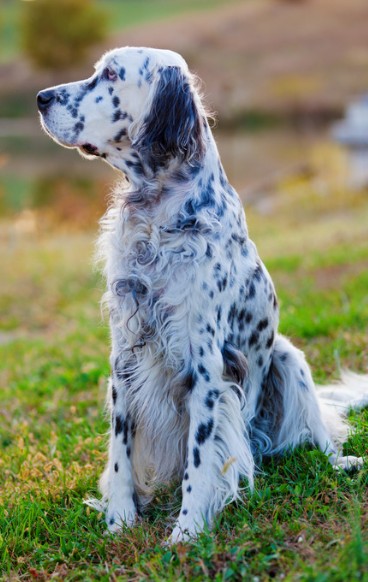
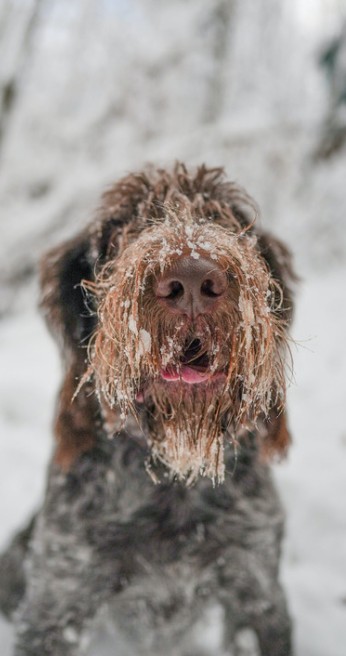
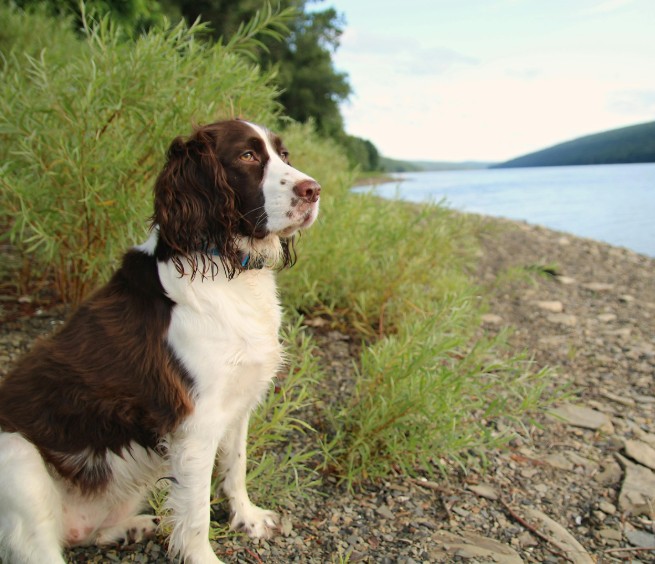
Exercise sustains balance. Vigorous activity paired with mental stimulation prevents anxiety and destructive habits. From swimming to scent work, sporting dogs flourish when their bodies and minds are equally engaged.
Performance & Activities: Channeling Natural Abilities
Sporting Activities for Modern Life
Your sporting dog doesn’t need to hunt to be fulfilled—they just need activities that simulate their natural behaviors. Modern dog sports have evolved to provide safe, accessible outlets for sporting breeds’ instincts, and participating in these activities can transform a frustrated, under-stimulated dog into a confident, satisfied companion.
Popular sporting dog activities:
- Dock diving: Combines swimming ability with retrieving drive in a competitive format
- Hunt tests: Non-competitive events that evaluate natural hunting abilities without actual hunting
- Agility: Channels their athleticism and trainability into precision obstacle navigation
- Nosework: Competitive scent detection that any sporting dog can excel at
What makes these activities so valuable isn’t just the physical exercise—it’s the mental engagement and sense of purpose they provide. When your retriever launches off a dock or your pointer indicates on a hidden scent, they’re accessing deep genetic programming that brings profound satisfaction. You might notice your dog is calmer and more settled at home after participating in breed-appropriate activities, even if the actual exercise duration was shorter than a typical walk.
Working Roles and Career Options
Beyond weekend sports, many sporting dogs find fulfillment in professional working roles. Their unique combination of trainability, gentle temperament, and sensory capabilities makes them invaluable in numerous fields. Understanding these applications helps us appreciate the full scope of sporting dogs’ abilities and might even inspire you to explore working opportunities with your own dog.
Professional applications for sporting dogs:
- Medical detection: Sporting dogs can identify cancer cells, predict seizures, and alert to blood sugar changes
- Conservation work: Using their tracking abilities for wildlife population surveys and anti-poaching efforts
- Search and rescue: Their persistence and scent abilities save lives in disaster situations
- Therapy and emotional support: Their gentle nature and intuitive understanding of human emotions provide comfort
The transition from hunting companion to medical detective showcases the remarkable adaptability of sporting breeds. Research reveals that dogs trained to detect cancer show activation in the same brain regions used for tracking game, suggesting that these modern applications build on ancient neural pathways. This means your sporting dog’s obsession with sniffing everything isn’t just curiosity—it’s a sophisticated sensory system that, with training, could literally save lives.
Activity & Sport Detailed Guides: Channeling Your Dog’s Potential
Getting Started in Dock Diving
Watching your retriever launch off a dock in pursuit of their favorite toy is pure joy—and it might be the perfect sport for your water-loving sporting dog. Dock diving has exploded in popularity because it’s accessible, safe, and celebrates what these dogs do naturally: jump and retrieve!
Finding facilities and getting started:
- Locate pools: Search “dock diving near me” or check DockDogs and NADD websites for facilities
- Try-it days: Most facilities offer introductory sessions for $20-30 to test your dog’s interest
- Equipment needed: Just a floating toy your dog loves and a standard collar or harness
- Pool types: Competition pools are 40 feet long, but practice facilities vary
Training progression for beginners:
- Water confidence (Week 1-2): Start with shallow water entry, using treats and toys for motivation
- Dock acclimation (Week 2-3): Let your dog explore the dock without pressure, rewarding calm behavior
- Exit training (Week 3-4): Teach your dog to swim to the ramp—this is crucial for safety!
- Short tosses (Week 4-6): Begin with 2-3 foot throws, celebrating every attempt
- Building distance (Week 6+): Gradually increase throw distance as confidence builds
Competition divisions make it fair for everyone:
- Lap dogs: Under 16 inches tall—yes, small sporting dogs can compete!
- Futures: 16-22 inches, perfect for Brittanys and Boykins
- Contender/Elite: Over 22 inches, where Labs and Goldens shine
- Veterans: Dogs over 8 years compete against age peers
Did you know the world record for dock diving is over 36 feet? But here’s the secret: your dog doesn’t need to be a champion to benefit. The mental stimulation, physical exercise, and bonding experience make dock diving valuable regardless of distance achieved. Many dogs who initially fear water become confident swimmers through patient dock diving training. 🐾
Hunt Test Preparation: Honoring Heritage
Hunt tests aren’t about competition—they’re about evaluating your sporting dog’s natural abilities against a standard. Even if you never plan to hunt, preparing for hunt tests provides incredible mental and physical stimulation while honoring your dog’s heritage.
Understanding the organizations:
- AKC Hunt Tests: Junior, Senior, Master levels with increasing difficulty
- UKC/HRC Tests: Started, Seasoned, Finished levels with similar progression
- NAHRA: Specific to retrievers with Started, Intermediate, Senior, Master levels
12-Week preparation timeline for beginners:
Weeks 1-4: Foundation Skills
- Basic obedience: Sit, stay, heel become non-negotiable
- Marking practice: Start with white bumpers in short grass, 10-15 yard retrieves
- Introduction to gunfire: Begin with cap guns at distance, gradually moving closer
- Water entries: Build enthusiasm for water retrieves
Weeks 5-8: Building Complexity
- Double marks: Throw two bumpers, dog retrieves both in sequence
- Longer retrieves: Extend to 30-40 yards on land, 20-25 in water
- Basic handling: Teach “back” and “over” commands for directing at distance
- Distractions: Add decoys, unusual terrain, other dogs training nearby
Weeks 9-12: Polishing Performance
- Blind retrieves: Send your dog for bumpers they didn’t see fall
- Steadiness: Dog remains calm during throws and gunfire until released
- Multiple scenarios: Practice different lighting, weather, and terrain
- Mock tests: Set up junior-level scenarios with training partners
Essential equipment for hunt test training:
- Training bumpers (white and orange)
- Duck scent (liquid or wax)
- Whistle (acme or fox)
- Long check cord for early training
- Bird launchers (optional but helpful)
Your first hunt test will be nerve-wracking—that’s normal! Remember, judges want you to succeed. They’ll explain exactly what’s expected, and at Junior levels, encouragement is allowed. Most dogs need 3-4 tests to settle into the routine. The community is incredibly supportive, with experienced handlers always willing to help newcomers.

Scent Work at Home: Unleashing the Nose
Your sporting dog’s nose is a supercomputer capable of detecting scents at concentrations of parts per trillion. Scent work transforms your living room into a detection laboratory, providing intense mental stimulation that satisfies deep instinctual drives.
DIY nosework progression games:
Game 1: Box Search (Beginner)
- Materials: 6-10 cardboard boxes, high-value treats
- Setup: Place treat in one box, encourage searching
- Progression: Add more boxes, hide treat deeper, use scent tins instead of food
- Time: 5-10 minutes sessions, 2-3 times daily
Game 2: Room Search (Intermediate)
- Hide treats/toys around one room while dog waits
- Start with easy, visible hides
- Progress to under furniture, behind doors, elevated surfaces
- Add verbal cue “Find it!” to start searching
Game 3: Scent Discrimination (Advanced)
- Introduce specific scents: birch, anise, or clove essential oils
- Start with scent + treat, gradually fade treat
- Teach alert behavior (sit, down, or nose touch)
- Hide scent vessels in increasingly challenging locations
Creating scent challenges:
- Container searches: Multiple boxes/bags with one containing target scent
- Interior searches: Hide scents in rooms with various distractions
- Exterior searches: Take searches outside with wind and weather variables
- Vehicle searches: Hide scents on car exteriors (great for rainy days in garages)
Professional nosework classes take these concepts further, but home practice provides excellent enrichment. Studies show just 15 minutes of scent work equals an hour of physical exercise in terms of mental fatigue. You’ll notice your dog sleeping deeply after scent sessions—their brain has been working hard!
Swimming Safety & Training: Water Confidence for Life
Not all sporting dogs automatically love water—even breeds bred for water retrieval sometimes need patient introduction. Building water confidence safely ensures years of aquatic enjoyment and exercise.
Building water confidence progressively:
Step 1: Positive associations (Day 1-7)
- Feed meals near water (even a kiddie pool)
- Play favorite games near water sources
- Let them observe other dogs swimming happily
- Never force or throw your dog into water
Step 2: Shallow water exploration (Week 2-3)
- Start with water just covering paws
- Use floating treats or toys as motivation
- Wade in yourself—your confidence is contagious
- Praise any voluntary water interaction
Step 3: Swimming mechanics (Week 3-4)
- Support under belly as they learn paddle rhythm
- Many dogs try to “climb” water initially—this is normal
- Short sessions prevent fatigue and negative associations
- Exit strategy is crucial—always show them how to get out
Safety equipment essentials:
- Life jackets: Even strong swimmers benefit in open water or boats
- Long line: 20-30 foot waterproof lead for initial ocean/lake swimming
- Visibility: Bright colored vests or LED collars for dawn/dusk swimming
- First aid: Ear drying solution, towels, fresh water for rinsing
Recognizing fatigue and danger signs:
- Early fatigue: Slower return, lower body position in water
- Concerning signs: Heavy panting, reluctance to continue, attempting to climb on you
- Emergency indicators: Inability to keep head above water, disorientation, collapse after exiting
- Temperature awareness: Water below 50°F or above 85°F poses risks
Swimming provides incredible low-impact exercise for sporting dogs, especially seniors with arthritis. But remember—even water-bred retrievers can drown. Respect water conditions, monitor your dog closely, and never assume previous swimming ability guarantees current safety. That said, most sporting dogs who learn to swim safely become absolute water fanatics who’ll choose swimming over any other activity! 💧
Nutritional Recommendations: Fueling Your Athletic Partner
Understanding Sporting Dog Metabolism
Sporting dogs have unique nutritional needs that reflect their athletic heritage and higher activity levels. Their metabolism runs differently than less active breeds, with greater muscle mass requiring more protein and their active lifestyle demanding careful attention to caloric balance. You might notice your sporting dog seems hungrier than other dogs—this isn’t greed, it’s biology.
Key nutritional considerations:
- Protein requirements: Sporting dogs need 25-30% protein in their diet, higher than the average dog
- Fat for endurance: Moderate to high fat content (15-20%) provides sustained energy for long activities
- Joint support: Include glucosamine and omega-3 fatty acids to support their active joints
- Hydration needs: Active sporting dogs require 1.5-2x more water than sedentary dogs
The timing of meals matters too. Unlike some breeds that do well with once-daily feeding, sporting dogs benefit from two or three smaller meals to maintain steady energy levels. If you’re planning intensive training or exercise, feed your dog at least an hour before or after activity to prevent bloat—a serious condition that sporting dogs can be prone to due to their deep chests and enthusiastic eating habits.
Life Stage Nutrition
Your sporting dog’s nutritional needs evolve throughout their life, and understanding these changes helps prevent obesity, maintain muscle mass, and support cognitive function as they age. The high-energy puppy who seemed to inhale food will gradually require fewer calories, but their need for quality nutrition remains constant.
Nutritional needs by life stage:
- Puppy (0-12 months): High-calorie, nutrient-dense food supporting rapid growth and brain development
- Adult (1-7 years): Balanced nutrition matching activity level, with adjustments for working vs. companion dogs
- Senior (7+ years): Reduced calories but maintained protein, plus supplements for joint and cognitive health
- Working dogs: May need 1.5-2x the calories of pet dogs, with emphasis on digestible proteins and fats
Have you noticed your sporting dog gains weight more easily during winter months? This is partly due to reduced activity but also because many sporting breeds have efficient metabolisms that evolved to sustain them through long hunting seasons. This efficiency becomes a liability in our modern world of constant food availability. Regular body condition scoring—you should be able to feel but not see their ribs—helps you adjust portions before weight becomes a problem. 🧡
Health Concerns: Proactive Care for Your Sporting Companion
Breed-Specific Health Considerations
While sporting dogs are generally robust and healthy, certain conditions appear more frequently in these breeds due to their genetic heritage and active lifestyle. Understanding these predispositions helps you provide preventive care and recognize problems early, when treatment is most effective.
Common health concerns in sporting dogs:
- Hip and elbow dysplasia: Affects many larger sporting breeds, with genetic and environmental factors
- Exercise-induced collapse (EIC): Genetic condition in some retrievers causing weakness after intense exercise
- Ear infections: Those beautiful hanging ears that help trap scent also trap moisture and debris
- Eye conditions: Progressive retinal atrophy and cataracts appear in several sporting breeds
What’s encouraging is that responsible breeding practices have significantly reduced the incidence of many hereditary conditions. If you’re considering a sporting dog puppy, ask about health testing—reputable breeders will have documentation of hip scores, eye clearances, and genetic testing for breed-specific conditions. For those of us with adopted sporting dogs, knowing these potential issues helps us watch for early signs and adjust care accordingly.
Preventive Care and Wellness
Keeping your sporting dog healthy isn’t just about treating problems—it’s about preventing them. These active dogs benefit from a proactive approach to healthcare that considers their unique physiology and lifestyle. Your vet might recommend different screening schedules or preventive measures than they would for less active breeds.
Essential preventive care measures:
- Regular orthopedic evaluations: Early detection of joint issues allows for lifestyle modifications and treatment
- Dental health: Sporting dogs’ retrieving habits can affect dental health—regular cleaning is crucial
- Parasite prevention: Active outdoor dogs need year-round protection from ticks, fleas, and internal parasites
- Weight management: Monitor body condition closely, as even small weight gains stress joints
The good news? Sporting dogs who maintain appropriate weight and activity levels often enjoy remarkable longevity and quality of life. Studies show that sporting dogs who engage in regular, appropriate exercise maintain cognitive function longer than sedentary dogs, with some remaining active and alert well into their teens. This active aging is one of the rewards of providing proper care throughout your dog’s life.
Mental Health and Behavioral Wellness
We often focus on physical health, but sporting dogs’ mental wellness deserves equal attention. These intelligent, sensitive breeds can develop anxiety, depression, and compulsive behaviors when their psychological needs aren’t met. Recognizing and addressing mental health issues is just as important as managing physical conditions.
Signs of mental health concerns:
- Anxiety behaviors: Excessive panting, pacing, or destructiveness when alone
- Compulsive behaviors: Shadow chasing, excessive licking, or repetitive retrieving beyond play
- Depression indicators: Loss of interest in activities, changed sleep patterns, or social withdrawal
- Cognitive dysfunction: Confusion, altered sleep-wake cycles, or house training lapses in senior dogs
Supporting your sporting dog’s mental health involves more than just exercise. These dogs need predictable routines, positive social interactions, and mental challenges. Environmental enrichment—rotating toys, puzzle feeders, new walking routes—helps prevent boredom and maintains cognitive flexibility. If you notice behavioral changes, don’t wait to address them. Early intervention with positive training methods or, when needed, veterinary behaviorist consultation can prevent minor issues from becoming major problems.
Making the Decision
After exploring the world of sporting dogs, you might be wondering if one of these remarkable breeds belongs in your life. The answer isn’t just about having enough space or time for exercise—it’s about understanding what you’re looking for in a canine companion and whether you can provide what these special dogs need to thrive.
You might be perfect for a sporting dog if:
- You enjoy outdoor activities and want a companion for adventures
- You’re looking for a trainable dog who enjoys learning new things
- You have time for daily interaction and exercise, not just passive coexistence
- You appreciate a dog who wants to be involved in family activities
- You’re patient with enthusiastic behaviors like carrying objects and following you around
Consider other breeds if:
- You prefer independent dogs who don’t need constant interaction
- Your lifestyle is extremely sedentary with no interest in increasing activity
- You’re away from home for long periods without dog care arrangements
- You’re looking for a guard dog—most sporting breeds are too friendly for protection work
The Rewards of Sporting Dog Ownership
Living with a sporting dog means embracing a lifestyle of activity, engagement, and partnership. These dogs don’t just live in your home—they become integral parts of your daily routine, your outdoor adventures, and your family dynamics. The same traits that made them invaluable hunting companions—cooperation, gentleness, intelligence, and enthusiasm—make them extraordinary family members.
The joy of watching your retriever launch into a lake, the pride when your pointer masters a complex training challenge, the comfort of your spaniel curled beside you after a long day—these moments define sporting dog ownership. You’re not just getting a pet; you’re gaining a partner who will encourage you to explore, to stay active, and to appreciate the natural world through their enhanced senses and infectious enthusiasm.
Your Journey Forward
If you’ve decided a sporting dog is right for you, your journey is just beginning. Whether you choose a bouncing Labrador puppy, adopt a mature setter from rescue, or welcome a trained hunting dog ready for retirement, you’re entering a world of remarkable dogs with centuries of heritage and limitless potential.
Next steps in your sporting dog journey:
- Research specific breeds that match your lifestyle and activity level
- Connect with breed clubs and sporting dog communities for insights and support
- Visit field trials or hunt tests to see sporting dogs in action
- Consider fostering through breed-specific rescues to experience life with a sporting dog
- Prepare your home and schedule for the commitment these special dogs deserve
Remember, every sporting dog is an individual. While breed traits provide a framework, your dog’s personality, experiences, and relationship with you will shape who they become. Some retrievers prefer cuddles to fetching, some pointers never point, and some spaniels would rather nap than swim. Embracing your dog’s unique personality while understanding their genetic heritage creates the foundation for a remarkable partnership.
The world of sporting dogs offers endless opportunities for adventure, learning, and companionship. Whether you’re throwing tennis balls in a suburban backyard, competing in dock diving championships, or simply enjoying quiet walks where your dog can explore every fascinating scent, you’re participating in an ancient partnership between human and dog. These remarkable breeds don’t just enhance our lives—they transform them, bringing joy, purpose, and unconditional love that only a sporting dog can provide.
Welcome to the wonderful world of sporting dogs. Your greatest adventures are just beginning. 🧡

